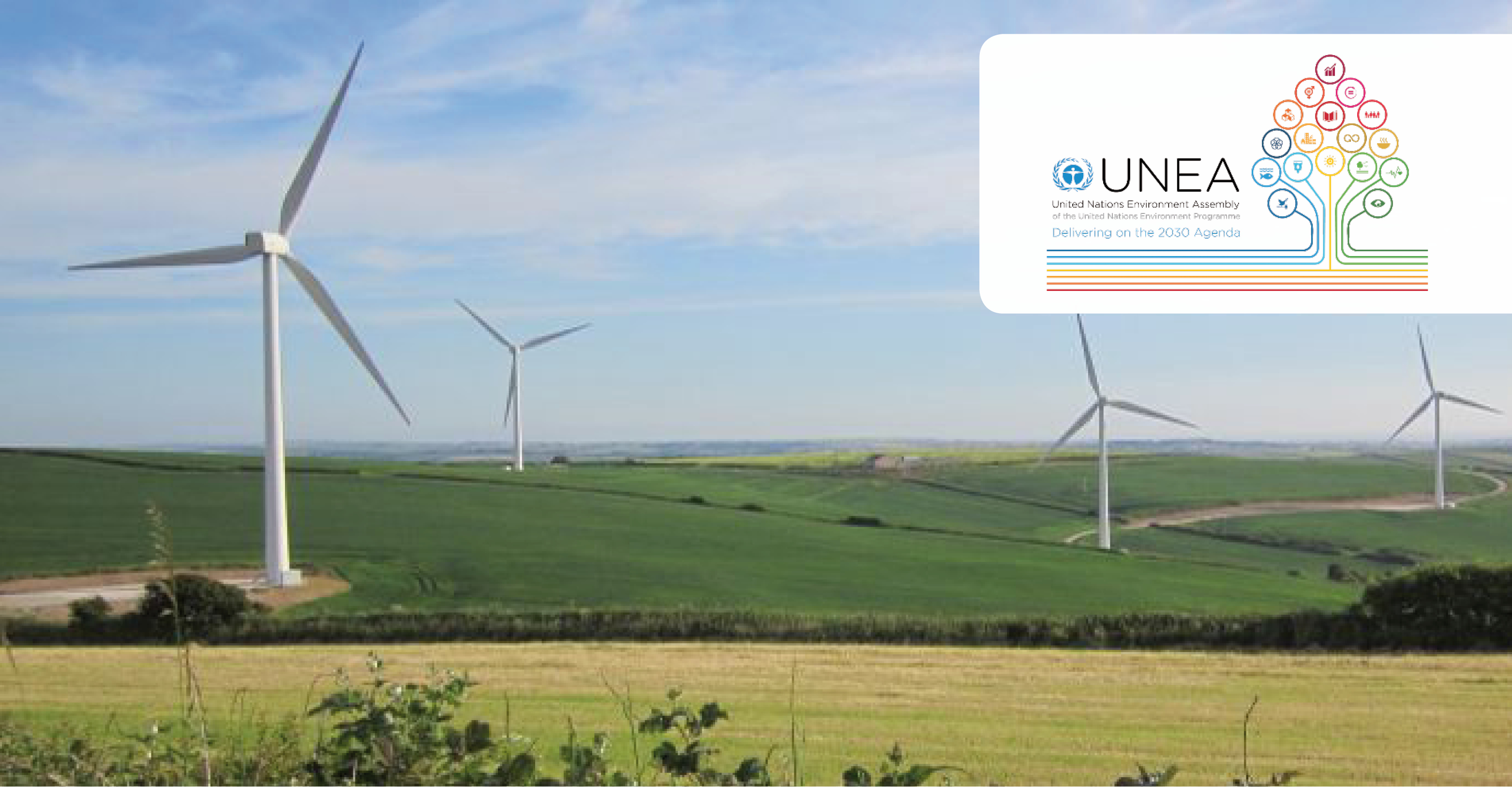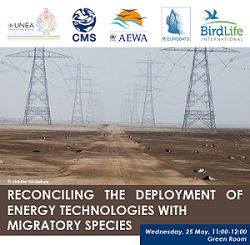UNEA Event Spotlights Wildlife-friendly Energy Deployment

Wind farm in the UK © Robert Vagg UNEP/CMS
Bonn, 28 May 2016- The CMS Family and BirdLife International joined forces at the Second Session of the United Nations Environment Assembly (UNEA) to raise awareness of guidelines devised to ensure that renewable energy installations are deployed in ways that have no adverse impact on migratory species such as birds and bats.
The second session of UNEA was being held at the headquarters of the United Nations Environment Programme (UNEP) in Nairobi 23-27 May. Among the leading participants were the Former President of the Republic of Kiribati, H. E. Mr Anote Ting; former President of Ireland, Mary Robinson; Sanjaasürengiin Oyun of Mongolia, the President of UNEA; Ivo de Boer, former Executive Secretary of UNFCCC; CMS Executive Secretary, Bradnee Chambers; AEWA Executive Secretary, Jacques Trouvilliez; and Patricia Zurita, CEO of Birdlife International. A host of Government ministers was also attending the Assembly.
 UNEA, which has universal membership of all 193 UN Member States, is the successor body to the Governing Council of UNEP and is the principal intergovernmental forum dealing with the environment. Its first session was held in June 2014 and attracted over one thousand participants including 113 ministers.
UNEA, which has universal membership of all 193 UN Member States, is the successor body to the Governing Council of UNEP and is the principal intergovernmental forum dealing with the environment. Its first session was held in June 2014 and attracted over one thousand participants including 113 ministers.
The agenda for the main meeting covered a range of issues, many directly relevant to CMS and the wider CMS Family, including illegal trade in wildlife, marine debris and the relationship between UNEP and Multilateral Environment Agreements. The parallel programme of side events included a presentation jointly organized by CMS, AEWA and EUROBATS in conjunction with the NGO, BirdLife International, on “Reconciling the Deployment of Energy Technologies with Migratory Species”.
“We will have to develop renewable energy sources, in addition to increasing energy efficiency, to reduce our dependency on fossil fuels and to curb greenhouse gas emissions. Renewable energy is an essential part of the strategy for the transition from traditional fuels, but appropriate planning, deployment and operation of renewable energy infrastructure are necessary if adverse effects on wildlife are to be avoided,” said Bradnee Chambers, Executive Secretary of CMS.
Jacques Trouvilliez, Executive Secretary of AEWA, said “Birds and bats are affected in different ways by the development of renewable energies, and powerlines can create barriers to migration but we have solutions: planning and design in the landscape and mitigation measures are key elements and should be part of any project if we want to reconcile biodiversity conservation and green energies”.
Patricia Zurita, the CEO of BirdLife International said “It is of crucial importance that renewable energy is developed and deployed in a sustainable manner in order to attain the targets of the Paris Climate Agreement.”
A set of guidelines on the appropriate deployment of renewable energy technologies and migratory species has been developed by the CMS Family and was endorsed by CMS Parties at their most recent conference in Quito in November 2014 and the Fifth Meeting of the Parties to AEWA in November 2015. At the same time, CMS Parties established an international multi-stakeholder task force on energy, bringing together conservationists, governments, investors and power companies with the aim of joining forces to implement the guidelines and build partnerships.
Zurita added “The Energy Task Force is a pioneering initiative that will promote relevant guidelines on appropriate locations for developments by integrating environmental considerations in planning, assessment and mitigation measures to minimize the risk to migratory species and to secure a sustainable future for people and the environment.
The “Green Room Event” which took place on Wednesday, 25 May, was attended by the Executive Secretaries of CMS (Bradnee Chambers) and AEWA (Jacques Trouvilliez) and BirdLife International’s CEO, Patricia Zurita.
Last updated on 21 June 2016


